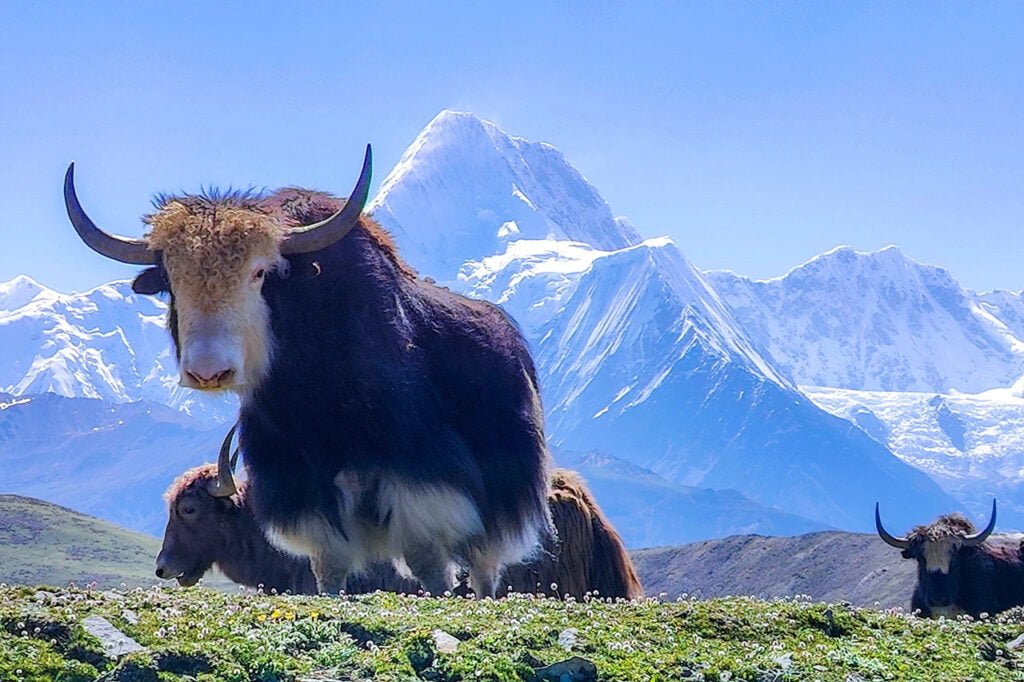Wild yaks are the robust relatives of domestic yaks. They possess strong limbs and a hairy body, with long hair that nearly reaches the ground on their chest and abdomen. They are a cold-resistant species, highly adapted to the harsh conditions of the Qinghai-Tibet Plateau.
National Class A Protected Animal – Wild Yak (Drong)
Tibetan Wild Yak are well adapted to life on the plateau. Large ungulate species adapted to the high altitude anoxic environment. They evolved a larger thorax with 14 pairs of ribs, one more than a cow at lower altitudes. The grunt of a wild yak sounds like a pig, So in origin is also called a “humming cow”. They don’t make sounds like other cows.
When wild yaks attack, they raise their tail and dig their forefeet. It is important to be aware of the traits of wild yaks during fieldwork. Male wild yaks are attracted to female domestic yaks. Both male and female wild yaks have horns and similar angles. However, the male’s horns are larger and stronger than the female’s. They lack a wattle beneath the forehead but have a bulge on the shoulder.
During the summer, male wild yaks join the herdsman’s family of yaks. The domestic yak is a domesticated version of its wild counterpart. Tibetan life and culture are intricately tied to the yak, and it is inseparable from their brilliant culture. Yak dung serves as fuel for herders year-round, and their milk, meat, fur, and bones are essential for survival.

Yaks have been essential for transportation in traditional nomadic life and are depicted in our ancestors’ rock paintings. They were historically abundant in various regions of the western plateau of Tibet, such as the buffalo gullies like the bison ditch near Golmud. Wild yaks continue to exist in significant numbers.
In the Kunlun Mountains, wild yaks can be naturally preserved for a long time. Today, their distribution is limited to the sides of the Kunlun Mountains, like Hoh Xil, Qiangtang, Altun, Qilian Mountains, and nearby areas.
With improved protection in recent years, people’s awareness of the conservation of wild yaks has significantly increased, leading to the recovery of the wild yak population.

